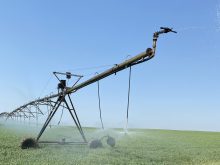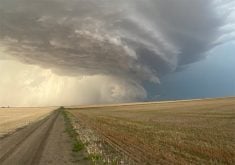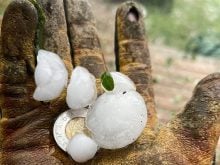After a slow, cold start to the 2008 growing season, producers were able to thank weather and a lack of severe crop pest infestations for a better than average harvest.
Canadian Wheat Board agrologist Mike Grenier told producers attending CWB meetings held as part of Saskatoon’s Crop Production Week Jan. 16 that a few problems did hit isolated areas.
![]()
Ergot was present in 25 to 75 percent of last year’s cereal samples in eastern Saskatchewan and western Manitoba.
Read Also

Rented farmland jumps 3.4 million acres in Saskatchewan and Alberta
Farmland rented or leased in the two provinces went from 25.7 million acres in 2011 to 29.1 million in 2021, says Census of Agriculture data.
The risk continues however, because the disease remains on the new crop’s seed and in the soil, awaiting favourable conditions this year.
Orange wheat blossom midge damage was limited to parts of the central and northern grain belt. As well, a parasite of the insect may be helping reduce problems.
Sawfly was not as serious as in some years, which is attributed largely to new, solid stem wheat varieties.
Grasshoppers weren’t a serious concern for most producers in 2009 but are threatening in many areas of Manitoba and in patches in eastern and central Saskatchewan.
Fusarium head blight was a serious issue in Manitoba’s Red River Valley, but hasn’t been a serious concern in 2008. Unless weather conditions favour it during flowering in 2009, it will only be a problem in areas where it has already spread.
Bruce Burnett of the wheat board said 2008 was a year of timely rain for many producing areas, but soil moisture conditions are poor in southern and northern Alberta and western Saskatchewan.














